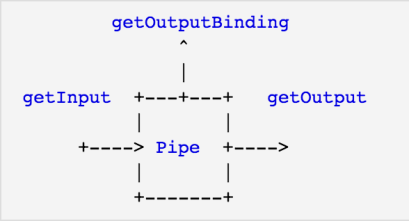Its a tool where you can load content tree nodes , perform some operation and either Retrieve an output or Modify the nodes. The aim here is to provide reusable blocks called pipes which can be configured for any possible operation on content.

Install Sling Pipes in AEM
To begin with , you would AEM 6.1 + . Start with the download of the github project from here and build it using
mvn clean install -DskipTests |
Once the build is successful, upload the jar file : org.apache.sling.pipes-0.0.9-SNAPSHOT.jar in /system/console/bundles. If the bundle doesnt get resolved download the org.apache.sling.query jar from LINK1 and LINK2 and upload in AEM.
Make sure both the bundles are in Active state.
Basic Pipes
A Pipe is basically a jcr node which has several properties :
- sling:resourceType= slingPipes/plumber
- name= to be used as an id and could be a key for output bindings.
- path= defines pipe’s input . If its not present previous pipes output will be used as input for this pipe.
- expr= expression through which the pipe will execute
- additionalBinding= It is a node you can add to set “global” bindings (property=value) in pipe execution
- additionalScripts= scripts which can be used as expressions.
- conf=optional child node to add additional configurations.
Reader Pipes :
| Pipe Type | Description | Properties |
| Base Pipe | Dummy pipe, output=input | sling:resourceType = slingPipes/base |
| Sling Query Pipe | executes $(getInput()).children(expression) |
|
| JSON Pipe | feeds bindings with remote json |
|
| MultiPropertyPipe | iterates through values of input multi value property and write them to bindings |
|
| XPath Pipe | gets resources from the xpath query. |
|
| Authorizable Pipe | retrieve authorizable resource corresponding to the id passed in expression |
|
| Parent Pipe | outputs the parent resource of input resource |
|
| Filter Pipe | outputs the input resource if its matches its configuration |
|
Containers:
| Pipe Type | Description | Properties |
| Container Pipe | used to assemble a sequence of pipe. |
|
| Reference Pipe | executes the pipe referenced in path property. |
|
Writers:
| Pipe Type | Description | Properties |
| Write Pipe | Writes nodes and properties to the input of pipe |
|
| Move Pipe | used to move input to target path. |
|
| Remove Pipe | removed the input resource (node or prop) and returns the parent. |
|
| Path Pipe | get or create path in an expression. |
|
Execute Sling Pipe
Once the configurations are ready , broadly there are 2 ways to execute a pipe. If its just a GET call / read operation you can directly call it from browser or use cURL command. If its a POST call / write operation, you have to use cURL. Besides these basics you can also pass few parameters to execute a pipe. We will see more with examples.
Sling Pipes is apparently quite new in the AEM world , so it you might not get much context about it online. If you need to explore something complex using Sling Pipes, start with basics and then try to build upon the complex scenarios. You may also comment below few scenarios where content modification is needed and I can help you explore the usage of Sling Pipes in that use case. Going forward , I am sure this would be boon to us. Happy Exploring. !!
Read More Information about Sling Pipe below